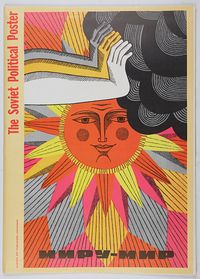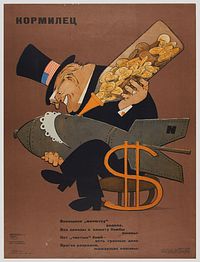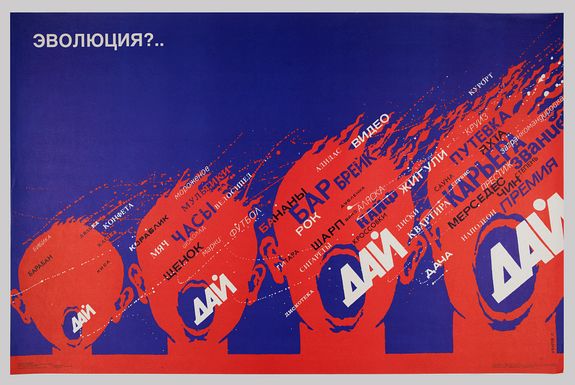Soviet propaganda poster
Propaganda
At its most basic, propaganda is biased or misleading information circulated via some form of mass media to promote a political agenda or viewpoint.
Propaganda is deliberately not objective and is usually part of a larger psychological campaign to influence people toward a specific opinion. It may include outright lies or more subtle misinformation and censorship.
Propaganda works by tapping into emotions through images, slogans, and selective use of information, or control and censorship of the facts.
This is especially true if propaganda is being utilized by a government that is controlling the media by censorship or one that owns and runs media outlets, as was the case in the former Soviet Union and communist China.
Soviet poster propaganda
Soviet poster propaganda after WWI was a constructivist-dominated design period, with bold reds and blacks and a strong emphasis on thick lines, bold sans-serif type and geometric forms.
Later, design in the USSR moved toward Socialist Realism and the accurate rendering of people, places and objects.
Early thematic content included defending the newly established state and encouraging enlistment for the armed forces.
Over the decades, the content would diversify and enrich with allusion and more complex meanings. General poster and propaganda themes included: families,
children, the benevolence of Soviet leadership and the threat from foreigners/capitalism, the space race, arms race and quest for athletic /
Olympic supremacy and other manifestations of the Cold War rivalry with the United States.
The posters were printed in the hundreds of thousands. They provided a means to propagate the ideologies of Lenin, Stalin,
the Communist ruling party, and abstract ideas and subjects of a generally positive nature.
A collection of 100 Soviet propaganda posters published during the early years of the Perestroika & Glasnost period by Plakat (All-Union Poster), Moscow — Плакат .
Most posters were published in 1986 and are in two formats: -The smaller ones are 650 x 480 mm / 25.6 x 18.9 inches, and - the larger ones are pretty big, 965 x 670 mm / 38 x 26.4 inches.
The offset printed posters are all in excellent condition, decorative, colorful, and have great designs!
They would be great for a University or institution specializing in Poster design and propaganda!
Plakat / Плакат (All-Union Poster) was created in 1974 in Moscow through the work of the Union of Artists and the Central Committee of the Communist Party. Dmitry Akimovich Isaev was the chief of its poster department.


